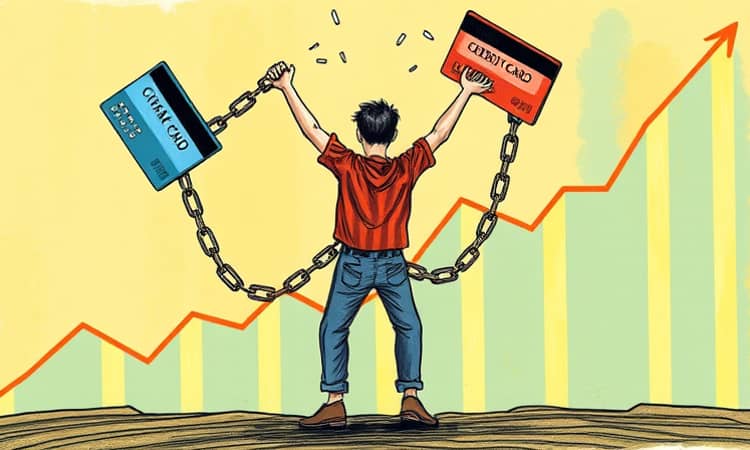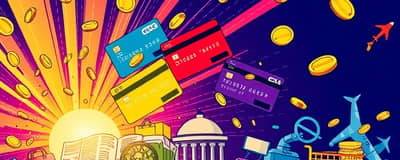Every year, millions of Americans grapple with credit card debt, searching for a path to relief. With balances climbing and interest rates rising, it’s easy to feel overwhelmed. Yet relief is within reach. This guide offers unpaid balances average $7,321 in Q1 insights, powerful strategies, and tools to help you break free.
The Numbers Behind the Burden
In the first quarter of 2025, the national average credit card debt among consumers with unpaid balances reached $7,321—a 5.8% jump from the year before. Collectively, U.S. consumers owe $1.18 trillion, down slightly from $1.21 trillion in late 2024.
Nearly 48% of credit cardholders carry a balance month to month, and 53% have remained in debt for over a year. Delinquency rates hovered at 3.05% for 30+ days late, marking a slight decrease after sustained increases from 2021 through 2023. However, delinquencies rose 63% in lower-income ZIP codes compared to 44% in higher-income areas since mid-2021.
Card ownership spans generations: 83% of baby boomers, 74% of millennials, 72% of Gen X, and 68% of Gen Z hold credit cards. These numbers highlight how widespread and varied debt challenges can be.
The Root Causes of Rising Balances
Understanding why balances keep climbing is key to crafting an effective payoff plan. Three main drivers stand out:
- High inflation and elevated interest rates that erode purchasing power.
- Emergencies such as medical bills, car repairs, and unforeseen expenses.
- Behavioral factors like overspending and missing payments.
Over the past three years, high inflation and elevated interest rates have collided with emergency expenses, creating a perfect storm for growing balances. Many households lack savings cushions, so persistent financial vulnerability among lower-income consumers remains a significant concern.
Proven Paths to Payment Freedom
Multiple strategies can help you take control of your balances. Choose the approach that best aligns with your goals and temperament:
- Debt Avalanche: Target the highest interest rates first for maximum savings.
- Debt Snowball: Pay off smallest balances first to build motivation.
- Balance Transfers: Move debt to 0% introductory rate cards to pause interest.
- Consolidation Loans: Combine debts into a single payment, often at a lower APR.
Each method offers unique benefits. The avalanche can save the most money long term, while the snowball fuels momentum with early wins. Balance transfers and consolidation can simplify payments, but watch for fees and rate resets.
Digital Allies: Apps and Tools to Accelerate Payoff
In today’s connected world, apps can streamline and automate repayment.
- Tally offers a line-of-credit consolidation service and tracks multiple cards for a single payment.
- Debt Payoff Planner visualizes payoff schedules with customizable scenarios.
- Bright Money automates optimized payments for a monthly fee and boosts credit scores.
- Debt Payoff Assistant on iOS supports reminders, extra payments, and progress tracking.
- Vertex42 provides free, Excel-based calculators for detailed budgeting.
- FinanceOps.ai focuses on business debt automation and reporting tools.
These platforms help you stay disciplined, avoid late fees, and monitor progress with intuitive dashboards.
Professional Help and Guided Plans
When DIY isn’t enough, professional services can provide structure and negotiated relief. Consider:
structured repayment plans with reduced rates arranged through nonprofit credit counselors often secure lower interest rates and waive fees. The National Foundation for Credit Counseling (NFCC) and local agencies offer one-on-one guidance and create tailored repayment schedules.
For those facing aggressive collections, institutions use advanced collections technology like C&R Software Debt Manager to ensure compliance and fairness. While not a direct consumer service, these platforms highlight the importance of working with legitimate organizations.
The Social and Economic Landscape
Debt trends do not exist in a vacuum. Younger adults, especially Gen Z, tend to carry fewer cards but are vulnerable due to lower incomes and limited financial literacy. Income inequality further compounds stress. In ZIP codes with the lowest median incomes, delinquencies spiked by 63% since 2021, versus 44% in wealthier regions.
As the economy moves beyond pandemic-era upheaval, many feel residual impacts: tighter budgets, higher costs, and cautious consumer behaviors. Recognizing these forces empowers you to adapt strategies based on personal circumstances.
Building Habits for a Debt-Free Future
Freedom from credit card debt requires consistent, positive habits. Foster lasting change with these actions:
- Build an emergency fund covering 3–6 months of expenses.
- Track spending patterns to identify and curb leaks.
- Set realistic goals and celebrate each milestone.
- Review credit card terms and negotiate lower rates.
- Monitor credit reports to catch errors early.
Automate where possible, such as scheduling payments ahead of due dates. Even small extra contributions can dramatically shorten payoff timelines and save on interest.
Conclusion
Credit card debt can feel like an immovable weight, but with the right plan, tools, and mindset, you can achieve lasting relief. Whether you choose an avalanche approach, leverage a top-rated app, or seek professional counseling, remember that you have the power to take control of your financial destiny. Start today, stay consistent, and watch your balances shrink as you move closer to genuine freedom.














